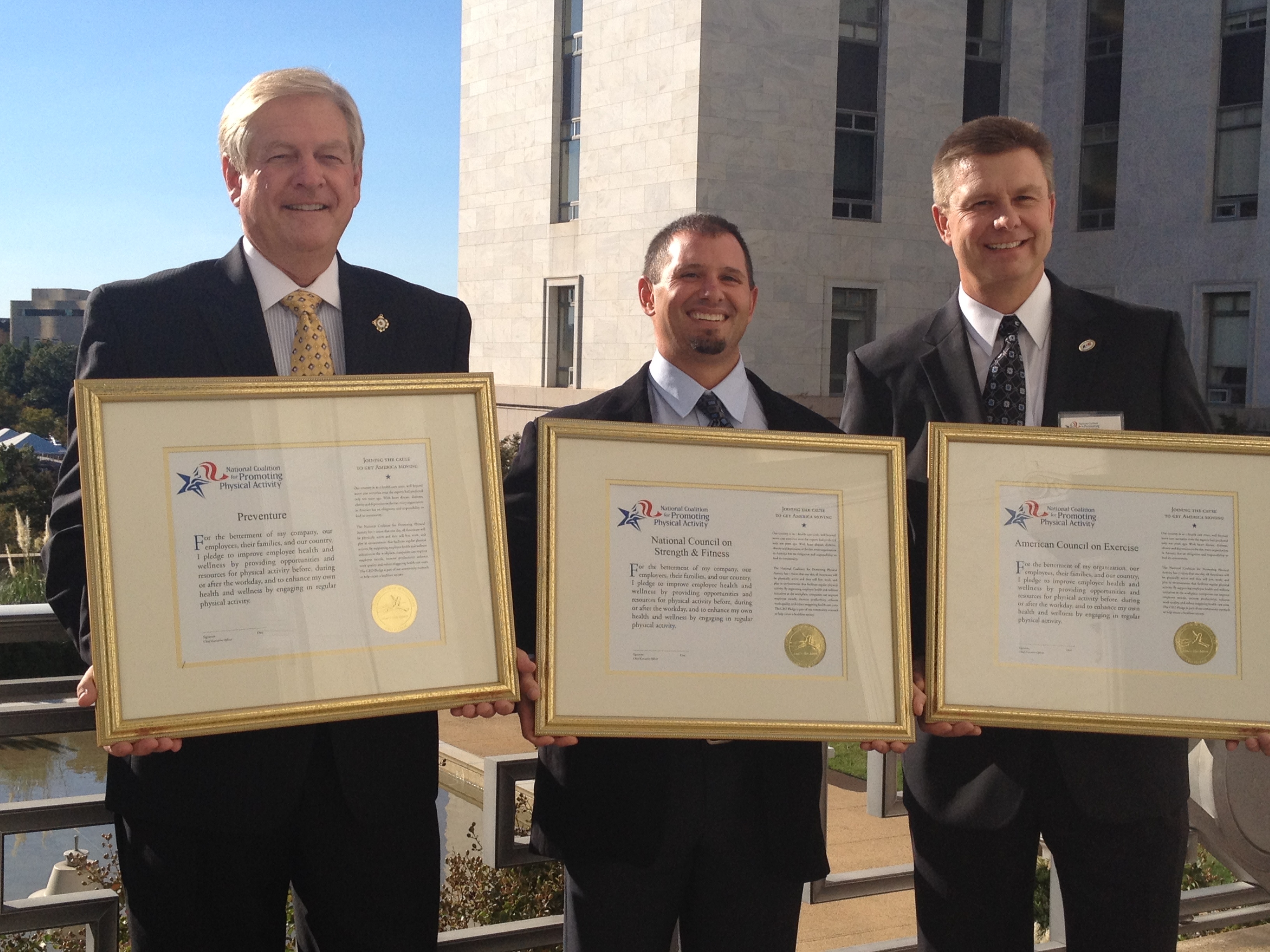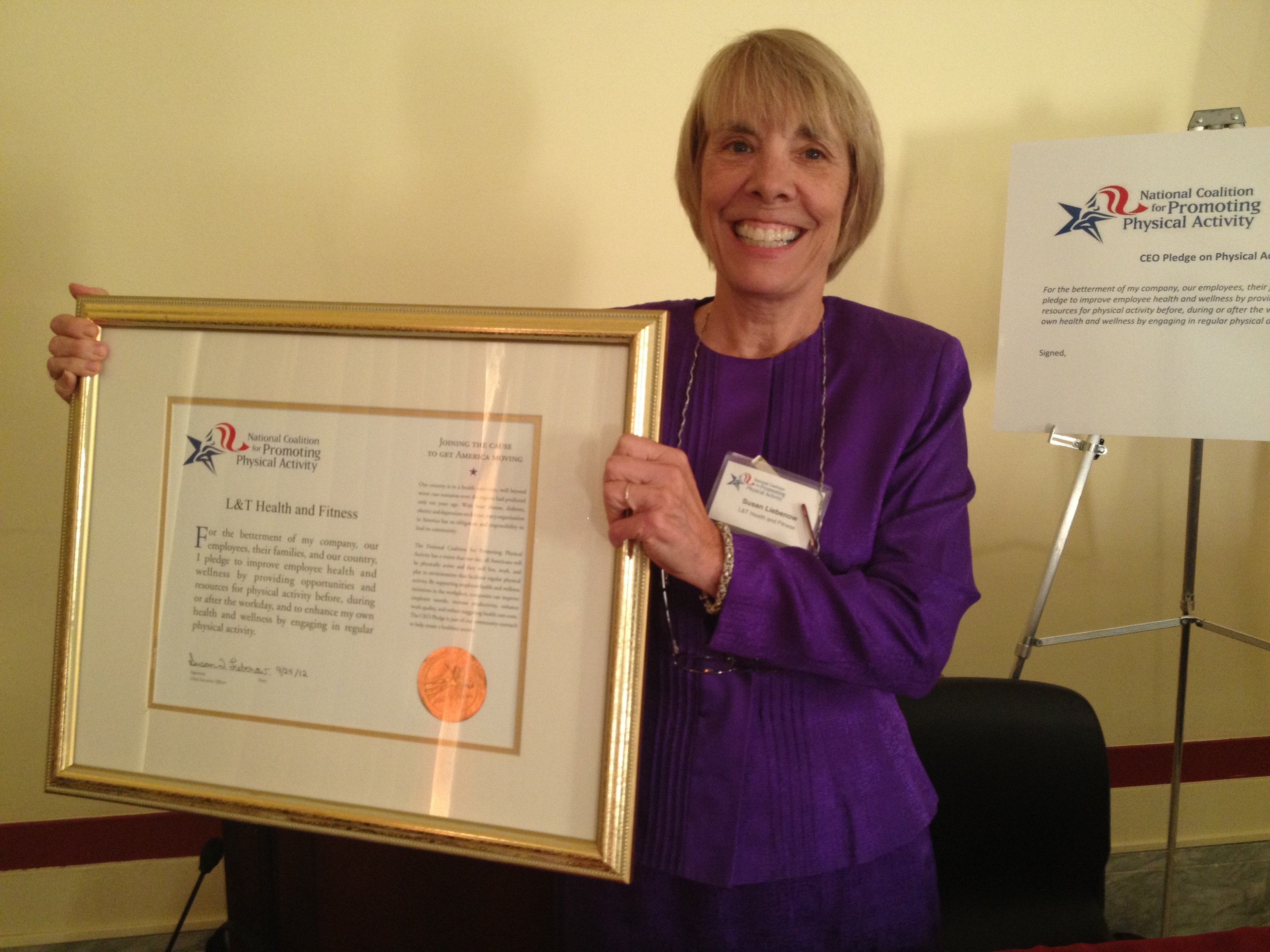By NCPPA
You may have read here before about the National Physical Activity Plan, but wonder how it can be put into action on a local or individual level.
The National Coalition for Promoting Physical Activity (NCPPA) is a proud advocate for the plan, which is a comprehensive set of strategies, policies, practices and initiatives aimed at increasing physical activity in the national population. Our goal is to produce a measurable and progressive increase in the percentage of Americans who meet recommended guidelines for physical activity throughout their lifetimes. The results we are looking for include improved health and well-being; increased productivity; reduction of health disparities; and lowered rates of disease, disability, and premature death attributable to sedentary lifestyles.
To carry out our work for the National Physical Activity Plan, NCPPA has built a network of eight industry sector teams, including business/industry, education, health care, parks and recreation, public health, and transportation. These teams of individuals work together to develop strategies and tactics aimed at getting people moving.
Mission: Readiness
So how do the sector goals translate into specific actions and policies? One great example where the impetus for increasing physical activity has tremendous impact is the military. Mission: Readiness, an organization of over 200 retired generals, warns Congress that the tripling of childhood obesity rates over the past three decades means that one in four 17-24 year-olds in the United States is too overweight for military service. Only 22% of high school seniors have daily physical education, and many students in those classes still get little exercise. Mission: Readiness advocates for replacing unhealthy public school food and making physical education and activity part of the school day. Over a 10-year period, the number of states with 40% or more of young adults who were overweight or obese went from 2 to 43, the group said. This is not only a public health issue, but one of national security.
Mission: Readiness continues to pushing state and school districts to increase physical education so more children will be physically fit and, therefore, prepared for military service.
CEO Pledge on Physical Activity
Another example of the NPAP in action is the campaign launched by NCPPA’s Business & Industry Sector called the CEO Pledge on Physical Activity. On September 24, 26 CEOs of corporations and organizations committed themselves to being physically active, and signed the pledge to provide their employees with opportunities to engage in physical activity. The pledge reads:
For the betterment of my company, our employees, their families, and our country, I pledge to improve employee health and wellness by providing opportunities and resources for physical activity before, during or after the workday, and to enhance my own health and wellness by engaging in regular physical activity.
“Research studies show that overall employee happiness and productivity are enhanced by daily exercise, especially when accessibility and support to exercise come from within the corporate environment,” NCPPA President Laurie Whitsel told CEOs assembled at a Capitol Hill signing ceremony. The lack of physical activity is a leading contributor to the nation’s obesity crisis, and work-related concerns often create hurdles to employee access to opportunities for physical activity.”
Below: Three CEOs present their signed Pledge on Physical Activity certificates. From left to right: Dave Pickering, Preventure; Brian Biagioli, National Council on Strength & Fitness; and Scott Goudeseune, American Council on Exercise.

Below: Sue Liebenow of L&T Fitness signs the pledge.

“The CEO Pledge makes clear that business leaders have an influential role to play in addressing our country’s health and health care crises,” said Joe Moore, President and CEO of the International Health, Racquet & Sportsclub Association, and one of the first to sign the pledge. “With most working adults spending roughly half their waking hours on the job on the days that they work, it is incumbent upon business and industry leaders to become part of the solution. By promoting physical activity and healthy lifestyles within the workplace, CEOs help their company’s bottom line, but they also help society.”
These are just two examples of how the National Physical Activity Plan is being put into action around the country every day. Please friend NCPPA on Facebook for more information and updates on the plan. And please check out our CEO Pledge page on Facebook, as well.
How are you implementing the National Physical Activity Plan?